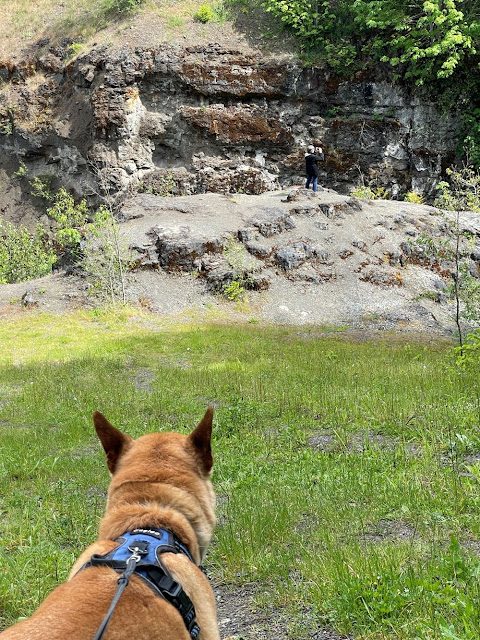I've made it to the most northwestern part of the continental United States – the Olympic Peninsula – which contains several different ecosystems – glacier-capped mountains, temperate rain forests and over 70 miles of coastline. But the best part of the Olympic Peninsula is that I got to meet up again with my caravan buddies Lou and Dave. Every year, when I'm on a road trip, we seem to run into each other and travel together for a few weeks. I love traveling by myself – the freedom, the adventure – but it is sometimes nice to be able to share these adventures with close friends.
We started off our Olympic National Park adventure by wanting to go up to Hurricane Ridge. Hurricane Ridge is one of the most visited area in the park. The views are supposed to be incredible. Luckily we stopped by the visitor center where they have a live video camera showing what the views are at the top. Every time we stopped by the the center to look at that screen, all we saw was a gray blob. The clouds were very low when we were there.
 |
| I never really thought fungi could be pretty |
No worries though, there is plenty to do in the area. We started off with a short loop trail by the Lake Crescent Lodge called Moments In Time Nature Trail. It was very flat, very green and had many educational plaques.
After lunch at the Lake Crescent Lodge (one of those classic lodges that many national parks have), we headed out for the official hike of the day to Marymere Falls. This was a lot of fun, a lot of climbing, a lot of people both coming and going on the narrow trail.
 |
| Marymere Falls a drop of 90 feet |
We stopped by another small falls which was lovely in its own right. There is a very short paved trail to the Madison Creek Falls.
 |
| Madison Creek Falls 50 foot drop |
 |
| The clouds are low today |
We did some urban activities also. We went to the small little town of Sequim ( I never could pronounce the name of that town correctly) to an art gallery and a hardware store. Interesting fact – 10 miles down the road, in the park, they get about 200 inches of rain a year. Her in Sequim, they average 16 inches. It is very very dry. In the hardware store window there was a sign saying Happy Irrigation Festival. Every year in May, they celebrate an irrigation system that finally brought water to this dry land.
Speaking of community events, in Port Angeles, there is a yearly marathon. Not only were there were a lot of happy people cheering on the runners, there was a band and also a beer garden. We found this out when we went to the Feiro Marine Life Center just as the marathon was finishing. This particular Marine Center was focused on sea life from the Strait of Juan de Fuca upon which Port Angeles sits. We were able to touch sea stars, hermit crabs and sea cucumbers.
Sea Slugs
Beautiful creatures, not so beautiful name
One of the rivers that was close to the campground was the Elwha River. The river was dammed in 1910 and supplied much electricity to Port Angeles. The construction was successful back in the day but it scored environmentally very low. The river once numbered 400,000 salmon who were making their runs up the river. Once the dam was built, the number of salmon declined to less than 4,000. Between 2011 and 2014, the dam was slowly removed, piece by piece. The salmon numbers have been rising exponentially since the dam was removed.
Miko is checking out Lou who is checking out the Elwha River Look - its Jonathan Seagull!






No comments:
Post a Comment